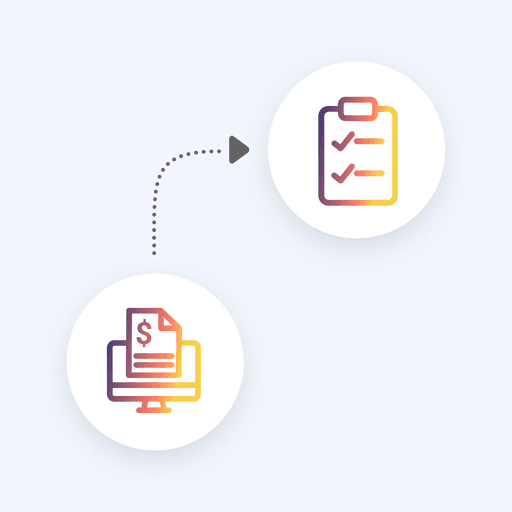
Why It’s Time for Finance and IT To Become Best Friends
- 8 min read
As the mandate for finance teams stretches beyond basic reporting and into more complex forecasting, CFOs can benefit from closer collaboration with their CIO.
Experts from AICPA, STARLIMS, TireHub, and Versapay discuss why a strong collaboration between finance and technology teams starts digital transformation on the right course.

The pandemic caused supply chain disruptions and economic instability aplenty. Amid these difficulties, the role of the finance department has stretched far beyond ensuring the books get closed.
CFOs in particular are increasingly expected to produce financial projections and forecasts. For instance, 65% of CFOs reported engaging with their CEO more often on company performance in the first year of the pandemic, according to a McKinsey survey.
But completing this kind of strategic analysis requires access to reliable data and time away from the humdrum of day-to-day accounting activities. That’s why more businesses are now focusing on digitally transforming how their finance teams operate.
Making sure these digitization projects move forward successfully requires a level of technical expertise beyond the bounds of a CFO’s typical skillset. For this reason, it’s vital that CFOs engage their CIO as a strategic partner early on in these initiatives.
In a recent webinar co-hosted with The Association of International Certified Professional Accountants (AICPA) titled, “The Growing Need for CFO and CIO Collaboration in Digital Transformation,” our panel of finance and technology professionals discussed why a successful partnership between their disciplines leads to higher efficiencies and accelerated cash flow for businesses.
Read on to learn the top reasons why our experts say finance and IT departments should form close partnerships.
The current imperative for Finance to collaborate with IT
1. Turning data into business outcomes
“As finance professionals we have tons of data, but we don’t always know what to do with it,” said panelist Doug Fedich, Chief Financial Officer at software company STARLIMS. “That seems like an important opportunity for overlap between Finance and IT.”
As finance leaders rise to the occasion to meet their business’ reporting needs, they’ll need a better way to gather and digest data than their current manual processes allow.
“Finance and accounting are moving to a higher value of service to the business,” said panel moderator Tom Hood, Executive Vice President of Business Growth for AICPA-CIMA and the Business Learning Institute.
“They’re going from collecting data, categorizing it, and providing basic analysis to doing more projections, forecasting, and telling the story of how the data will impact the business. That’s where we all want to be as finance professionals, but many of us are still trapped by the processes and systems we already have.”
Being able to operate with more agility is one of CFOs’ top priority areas for improvement, a survey from Workday finds. 49% of CFOs surveyed said that a lack of data prevented them from making and executing on decisions rapidly.
Greater partnership between Finance and IT through digitization projects can help elevate the Finance department to the level of strategic analysis and planning the current climate requires of them.
They’re going from collecting data, categorizing it, and providing basic analysis to doing more projections, forecasting, and telling the story of how the data will impact the business. That’s where we all want to be as finance professionals, but many of us are still trapped by the processes and systems we already have
2. The connection between finance digitization and customer retention
Doug also raised the point that finance digitization projects are in essence efforts towards customer retention. “When we take our personal experiences and apply those to the business world, how many of us are willing to go with one vendor over another simply because they’re easier to do business with?” he said.
Within the finance function, manual processes not only create negative customer experiences, but also leave money on the table.
For instance, when a supplier can’t post payments fast enough, a hold on customers’ credit may prevent them from purchasing more. “I’ve experienced that situation where we've gotten customers calling in because they want to give us more money and they can’t. Ultimately they need to serve their own customers,” said Doug. “There are short term revenue impacts to this, and in the long term, if it happens more and more, you could be looking at potential customer churn.”
With the unifying goal of enhancing customer experience and retention, it’s in the best interest of finance and technology teams to work together to digitize core accounting functions.
“Today, the new brand equity is convenience or ease of use,” said Ashok Vantipalli, Chief Information Officer at distribution logistics company TireHub.
“What the pandemic has showed us is that if you put the customer at the center of your universe and make sure doing business with you is easy, you will maintain brand equity and potentially have customers for life. To do that, companies need to think about what their teams are collectively doing to deliver that great customer experience—not just Finance or IT on their own.”
3. Greater chance of success with technology implementations
When Finance and IT are aligned on digitization projects from the very beginning, there’s also evidence to suggest that those projects are more successful, brought up Versapay’s Chief Technology Officer, Phil Pettinato.
“In previous years we’ve seen that IT wasn’t as involved with some of the digital transformation projects we were doing with our finance clients, unless there was a technical component to it such as an integration with their enterprise resource planning (ERP) system,” said Phil.
“But now, that’s certainly changing. I think COVID and the shift to remote work has accelerated that change. The most successful projects we see at Versapay are when IT and Finance collaborate on selecting the technology to drive specific outcomes for the organization. When both sides collaborate more effectively upfront, you tend to see the bigger picture more clearly and ultimately provide better solutions for yourselves, your business processes, and your customers.”
When defining what those outcomes are, Ashok notes that it’s important to home in on what you want your result to be, not just on the technology you think you need to achieve that result.
“When it comes to digital transformation, people have varying degrees of understanding and expectations of that term. Many times, when finance teams had a challenge, they would come to IT saying, ‘here’s the hammer and the nail.’ But as soon as COVID hit, it was out of necessity that they came together to solve problems in the most effective way.”
Focusing on outcomes first and foremost could illuminate a potential path that you hadn’t considered before. For instance, if your goal in digitizing your accounting is to make the payment experience easier for your buyers, then a lockbox digitization solution likely won’t fit the bill as it doesn’t address the actual problem.
Having these conversations early on with stakeholders from both Finance and IT can save your business the cost of implementing the wrong solution and having to start over in the end.
Instead of being a job replacement, the reality of this transformation as we’re seeing it is that if your team goes from spending 75% to 25% of their time on reporting, they’ll now have time to spend actually thinking about the data and what it means.
Cultivating the right mindset for digital transformation
For finance professionals, who are more risk-averse by nature, it can be difficult to embrace change. It’s up to finance leaders to lead change management by positioning digital transformation as a value-add to their teams.
“With digital transformation and process improvements, some finance professionals might think, ‘If my job is to process paper and write checks, what’s going to happen to me?’” said Doug.
“But instead of being a job replacement, the reality of this transformation as we’re seeing it is that if your team goes from spending 75% to 25% of their time on reporting, they’ll now have time to spend actually thinking about the data and what it means. I think it’s part of our challenge as finance leaders to make sure we’re communicating that message of time savings, higher order thinking, and ultimately higher job satisfaction to our teams.”
To embrace the culture of digital transformation, finance teams can start thinking more like technology teams. And evidence shows that they already are. A survey of AICIPA’s audience found that agile thinking is one of the top five skills finance and accounting professionals feel are necessary to thrive in the new normal (reported by 34% of respondents).
“Whether you’re in IT or Finance, we are all measured on value creation,” said Ashok. “Most companies that aren’t in the software industry think that means they’re on the other side of digital transformation. But in reality, anyone can drive automation and transformation. Ultimately the companies that take the baton of digital transformation—which requires both Finance and IT—will better serve their customers and create value for their business.”
—
Watch the full webinar on demand here.
Want more stories like these in your inbox? Sign up for our newsletter.
About the author

Nicole Bennett
Nicole Bennett is the Senior Content Marketing Specialist at Versapay. She is passionate about telling compelling stories that drive real-world value for businesses and is a staunch supporter of the Oxford comma. Before joining Versapay, Nicole held various marketing roles in SaaS, financial services, and higher ed.


